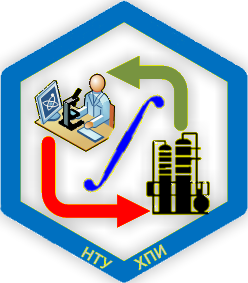НОВІ ТИПИ СКЛОКЕРАМІЧНИХ МАТЕРІАЛІВ ДЛЯ ЕЛЕКТРОННИХ СИСТЕМ
DOI:
https://doi.org/10.20998/2079-0821.2025.01.12Ключові слова:
склокерамічні матеріали, електронні системи, електричні властивості, термічні властивості, наноструктуруванняАнотація
Проаналізовано ріст та основні тенденції розвитку світового ринку передових матеріалів для електроніки та електричної техніки, які вказують на динамічний розвиток із середньорічним темпом приросту на рівні 17 % та інтенсивний ріст попиту на надійні, ефективні і стійкі функціональні керамічні та скломатеріали. Розглянуто основні види та властивості керамічних та скломатеріалів електротехнічного призначення та перспективи їх розвитку. Визначено актуальність розробки склокерамічних матеріалів нового покоління для задоволення потреб електронної та електротехнічної промисловості, зокрема засобів зв’язку, портативних комп’ютерів, датчиків, систем озброєння тощо. Встановлена перспективність створення принципово нових аспектів синтезу матеріалів придатних до формування методами мультиматеріального адитивного виробництва компактних електронних систем стійких до дії екстремальних факторів (удар, швидкісний нагрів тощо). Обґрунтовано вибір літійалюмосилікатних стекол для одержання склокерамічних матеріалів з самоорганізованою структурою з урахуванням аспектів ресурсо- та енергозбереження. Розроблено основні принципи при створенні нових типів наноструктурованих склокерамічних матеріалів для електронних систем. Імплементація розроблених принципів дозволить забезпечити вітчизняний ринок конкурентоспроможними виробами за рахунок зниження їх вартості та знизить імпортозалежність у галузі ІТ-технологій, приладо- та машинобудуванні, електроніки та електротехніки. Визначено конкурентоздатність нових типів склокерамічних матеріалів та їх значення для розвитку науки, техніки та промисловості.
Посилання
The future of work in the electronics industry Advancing decent work in more inclusive, sustainable and resilient electronics supply chains : report. Geneva : International Labour Office, 2024. 57 p. URL: https://researchrepository.ilo.org/esploro/outputs/995626 056202676 (date of access: 07.03.2025).
Averikhina T., Buriachenko M., Vasylieva V. Modern trends of the world market of electrical equipment. Economics. Finances. Law. 2021. No. 6/1. pp. 5–9. http://dx.doi.org/ 10.37634/ efp.2021.6(1).1
Ceramics Market Size, Statistics, Scope & Growth Drivers By 2031. Market Research Business Consulting and Strategy Planning Firm | Data Bridge Market Research Private Ltd. URL: https://www.databridgemarketresearch.com/reports/global- ceramics-market?srsltid=AfmBOoqdobIr-0G8WZJthTrhk- ZjYV6s4fignA7XbYRFH5nmJK2U7C_j (date of access: 01.03.2025).
Gopinath S.C.B., Ramanathan S., Yasin M.N.M., Razak M.I.S., Ismail Z. H., Salleh S., Sauli Z., Malarvili M.B., Subramaniam S. Failure Analysis on Silicon Semiconductor Device Materials: Optical and High-resolution Microscopic Assessments. Journal of Materials Research and Technology. 2022. Vol. 21. pp. 3451‒3461. https://doi.org/10.1016/j.jmrt.2022.10.116
Marimuthu S., Malathi A.C.J., Raghavan V., Grace A.N. Fundamentals of electronic ceramics. Advanced Ceramics for Energy Storage, Thermoelectrics and Photonics. 2023. P. 3–17. https://doi.org/10.1016/b978-0-323-90761- 3.00017-6
Letz M. Glasses and Glass Ceramics for Applications in High Frequency Electronics. 2019 IEEE MTT-S International Microwave Workshop Series on Advanced Materials and Processes for RF and THz Applications (IMWS- AMP), Bochum, Germany, 16–18 July 2019. 2019. URL: https://doi.org/10.1109/imws-amp.2019.8880114
Savvova O.V., Blinova N.K., Fesenko O.I., Voronov G.K., Babich O.V., Riabinin S.O. High-strength aluminosilicate glass composite materials with special electrophysical properties. Functional Materials. 2021. Vol. 28, No. 2. pp. 279‒286. https://doi.org/10.15407/fm28.02.279
Savvova O.V., Lyahovskiy A.F., Blinova N.K., Voronov G.K., Ryabinin S.A., Topchyi V.L. Development of impact-resistant glass-ceramic materials for radio-transparent armor elements. Voprosy Khimii i Khimicheskoi Tekhnologii. 2019. No. 3. pp. 151–157. https://doi.org/10.32434/0321-4095- 2019-124-3-151-157
Savvova O.V., Lyahovskiy A.F., Blinova N.K., Voronov G.K., Ryabinin S.A., Topchyi V.L. Alumina silicate glass-ceramic materials for electrical purposes. Scientific research on refractories and technical ceramics. 2020. Vol. 120. pp. 174–185. https://doi.org/10.35857/2663- 3566.120.17
Nazir A., Gokcekaya O., Billah K. Md M., Ertugrul O., Jiang J., Sun J., Hussain S. Multi-material additive manufacturing: A systematic review of design, properties, applications, challenges, and 3D Printing of materials and cellular metamaterials. Materials & Design. 2023. pp. 111661. https://doi.org/10.1016/j.matdes.2023.111661
Dadkhah М., Tulliani J.-M., Saboori A., Iuliano L. Additive Manufacturing of Ceramics: Advances, Challenges, and Outlook Journal of the European Ceramic Society. 2023.
pp. 6635‒6664. https://doi.org/10.1016/j.jeurceramsoc.2023.07.033
Khater G.A., Safwat E.M., Kang J., Yue Y., Khater A.G. Some Types of Glass-Ceramic Materials and their Applications. International Journal of Research Studies in Science, Engineering and Technology. 2020. Vol. 7, Iss. 3. pp. 1‒16.
Chakrabarti A., Menon S., Tarafder A., Molla A. R. Glass–ceramics: A Potential Material for Energy Storage and Photonic Applications. Advanced Structured Materials. Singapore, 2022. pp. 265–304. https://doi.org/10.1007/978-981- 19-5821-2_10
Huo W., Dai L., Hu B., Luo R., Wang G., Yuan B., Yu T., Lin B. Exploring the effect of facile i-line photolithography on the structure and physicochemical properties of photosensitive glass ceramics. Ceramics International. 2024. Vol. 50, Iss. 21, P. A. pp. 40722‒40728. https://doi.org/10.1016/j.ceramint.2024.07.082
Hamzawy E.M.A., El-Bassyouni G.T., Azooz M.A., Turky G.M. Electrical properties of Lithium silicate-based glasses and their Glass-ceramics Journal of Materials Science: Materials in Electronics. 2024. Vol. 35, No. 3. 253. https://doi.org/10.1007/s10854-024-11981-2
Jakovac M., Žic M., Pavić L., Klaser T. Electrical Properties of Two Types of Lithium-Based Glass Ceramics. Acta Stomatologica Croatica. 2022. Vol. 56, No. 3. pp. 281–287. https://doi.org/10.15644/asc56/3/6
Tian S., Shen H.Y., Huang J.J., Zhang H., Liu K.G., He B., Zhao J., Kong L.B. Sintering behaviors, microstructure and properties of Li2O–Al2O3–SiO2 glass-ceramics for LTCC applications. Materials Chemistry and Physics. 2025. Vol. 330. pp. 130163. https://doi.org/10.1016/j.matchemphys.2024.130163
Liang T., Zhang J., Chen H., Gao L., Gan G., Qu S., Wu C., Harris V.G. Effect of Al2O3 on structural dynamics and dielectric properties of lithium metasilicate photoetchable glasses as an interposer technology for microwave integrated circuits. Ceramics International. 2020. Vol. 46, No. 11. pp. 18032–18036. https://doi.org/10.1016/j.ceramint.2020.04.119.


